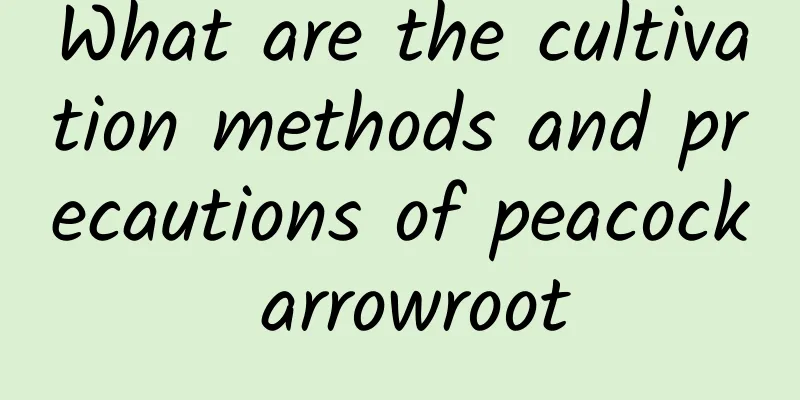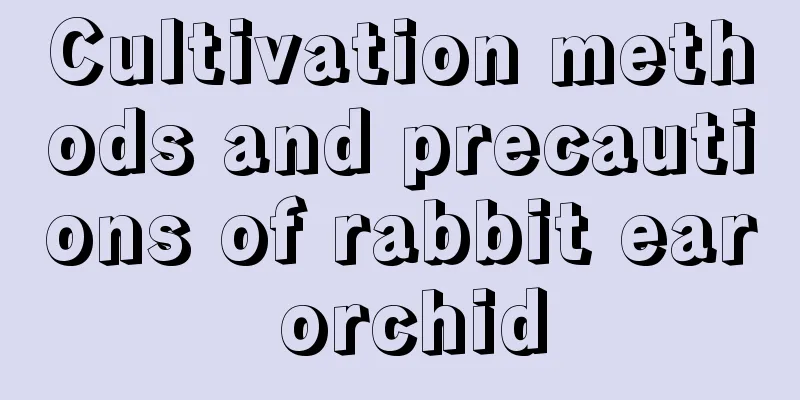What are the cultivation methods and precautions of peacock arrowroot

Peacock arrowroot cultivation methodPeacock arrowroot is a plant of the Marantaceae family and the genus Maranthus. Its main methods of reproduction are division and cutting. It likes a warm, humid, semi-shady environment. It needs to be shaded in the summer and the temperature should be maintained between 12-29 degrees. The temperature in winter needs to be maintained between 16-18 degrees. It is not very demanding on the soil, but it is required to keep it moderately moist. If the peacock plant is not watered in time, its leaves will curl upwards. It needs to be placed back in a high humidity environment as soon as possible so that the leaves can unfold. It needs to be sprayed with water to keep it moist and watered frequently, but no water should accumulate. Watering methodThe peacock plant prefers an environment with slightly higher air humidity. The ideal air humidity is between 75 and 85 percent. Therefore, in addition to watering, it is also necessary to spray water in time to increase the humidity in the growing area. Fertilization methodThe peacock plant does not have very high requirements for fertilizer. Giving it a thin liquid fertilizer once every half a month during the growth period can meet its needs. Pay attention to applying thin fertilizers frequently and do not use concentrated fertilizers. Pruning methodsCut off the longer leaves of the peacock plant, because during the growing period, many new leaves will be blocked by the old leaves or even deformed, so proper pruning can ensure that the leaves always look bright. Precautions for breeding peacock arrowrootWhen caring for the peacock plant, the potting soil needs to be changed every two years to meet its growth needs for the soil. The plant is not cold-resistant, and the maintenance temperature in winter needs to be above 10 degrees. It likes sunlight, but is afraid of direct sunlight. It is best to provide bright scattered light. |
<<: What are the cultivation methods and precautions of Australian fir?
>>: What are the cultivation methods and precautions of fragrant wood?
Recommend
Orange Monroe cultivation methods and precautions (how to grow succulent Orange Monroe)
How to maintain Orange Monroe Orange Monroe is ac...
What are the effects of black wolfberry and the correct way to eat black wolfberry
1. Introduction to efficacy 1. Improve sleep: Bla...
Peony flower arrangement
Characteristics of Peony Flower Arrangement Line ...
Is aloe vera suitable for deep or shallow pots?
Should I use a deep or shallow pot for aloe vera?...
Main types of daylily
1. Lily of the valley The main variety of Astraga...
How to grow Clivia so that it can grow
1. Choose the right variety Not all varieties of ...
When is the best time to plant pansy seeds?
Pansy seed planting time Pansy is a biennial or p...
How to promote the flowering of Monstera in northern regions
Growth habits of Monstera Monstera is native to M...
What is the reason for the yellowing of lotus bamboo leaves
Causes of yellowing Burns caused by strong sunlig...
Diseases and prevention methods of Gloxinia
Diseases of Gloxinia: blight nematode disease sym...
Northeast garlic planting time and cultivation methods
Garlic is an herbaceous plant of the genus Allium...
When is the best time to repot the photinia? In which month is it suitable to repot?
Time to repot the photinia The Chinese photinia n...
What are the cultivation methods and precautions of dragon beard wood
Introduction of Dragon's Beard Wood The drago...
What is water spinach?
What is water spinach? Water spinach belongs to t...
Phalaenopsis cultivation methods and precautions
1. Breeding methods 1. Light: When growing Phalae...









